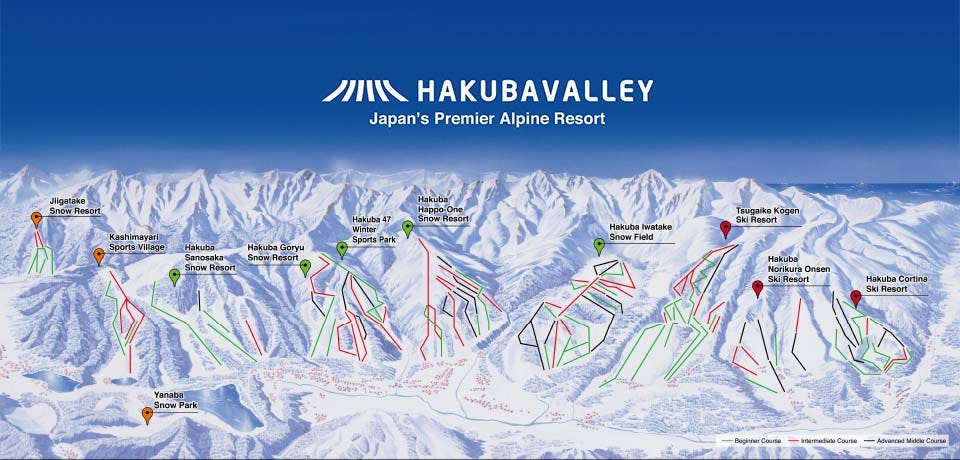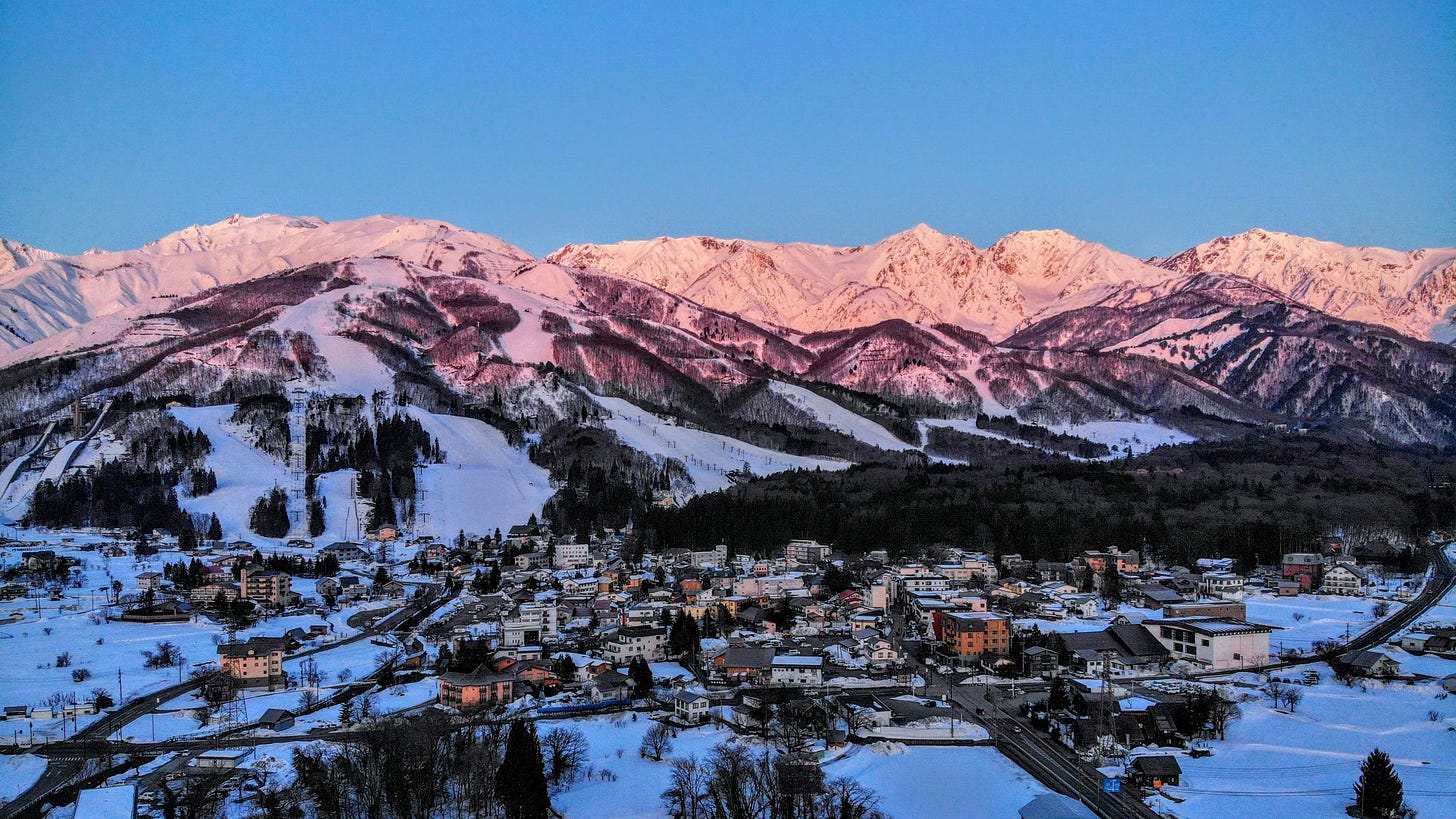Yes, in Japan, you can take a super-comfy train from central Tokyo straight to the world's best powder skiing
This is not a sponsored segment, I am honestly just that thrilled about this train line!
It sounds like something out of a travel fantasy: you stroll into Shinjuku Station in the morning, board a super comfortable train, and by mid-afternoon, you’re gliding across some of the best powder in the world.
This is Japan, after all.
# Table of Contents
1. The Azusa Train to Hakuba
2. Why Hakuba for Skiing?
3. What to Expect Onboard
4. Arriving in Hakuba
5. How to Book This “Ski Express”
6. Why This Train Is So “Insane”
7. Arrive & Ski: It’s That Simple
8. Final ThoughtsMeet the Azusa Train to Hakuba:
Yes, there’s an actual limited express train, JR East’s E353 Series Azusa, that takes you from the heart of Tokyo to the slopes of Hakuba in around four hours. More specifically, a special service known as Azusa No. 77 (and its corresponding return run) typically operates on weekends or select holidays. If you manage to catch it, you’ll be treated to:
One Daily Departure: Leaves Shinjuku in the morning (around 8:00 a.m.) and arrives in Hakuba around 12:00 a.m. That’s prime time to check in, rent your gear, and still sneak in a whole afternoon of skiing.
A Scenic Route on Narrow-Gauge Tracks: if you're a train nerd like me, you care that the track is only about a meter wide, meaning it's much more “local” than the Shinkansen, winding through forests, hugging tiny neighborhoods, and sometimes gliding so close to local backyards you could almost (but please don’t!) high-five through a window.

This image was taken 5 days ago by the Azumino Tourism Association Comfy, Modern Interiors: Plush seats, ample legroom, even more so if you splurge for the Green Car. All seats have individual power outlets, and the cabin itself feels refreshingly airy.
By the time you roll into Hakuba Station, you’ll have one of those amazing ”Only in Japan” moments…
Why Hakuba for Skiing?
Because it’s legendary. Hakuba sits in the Northern Japan Alps region of Nagano Prefecture, where winter means deep, fluffy powder. This is the kind of snow that dedicated skiers and snowboarders chase around the globe, pristine, light, and absolutely exhilarating.
I actually met a guy from Aspen, Colorado, at the Cortina resort in Hakuba, and he told me that the snow here is “waaay better than anywhere in America or Europe, duuude!”
Also, you get to experience the Onsens (hot springs), a uniquely Japanese after-skii tradition that will soothe your tired muscles so much you can skii the next day. On top of that, the area is surrounded by tons of izakayas serving hearty local dishes, and enough après-ski nightlife to keep you busy if you’ve still got energy to burn.
And the best part about skiing in Japan? You don’t need to rent a car and potentially die by sliding off a mountain or getting stuck in a snow-covered ditch and freeze to death!
So, jump on that Azusa train, let the conductor handle the driving, and cozy up with your gear until the snow-capped peaks of Nagano greet you at the station.
What to Expect Onboard
You’ll be on this train for about four hours, which is perfect for catching up on sleep, planning your first ski run, or gazing out the window at landscapes transitioning from urban sprawl to silent forests.
Comfort & Seating
Green Car: Two-and-two seating, big plush seats, plus a footrest. You get an outlet for each seat, handy for charging your phone, GoPro, or any other battery-thirsty device.
Ordinary Car: Still comfortable, with decent seat pitch and shared power outlets.
Scenery
Once the train leaves the densest part of Tokyo, it picks up speed and heads west. Little by little, you’ll see suburban neighborhoods, farmland, and then the mountains. By the time you’re around Matsumoto, you’ll be in real postcard territory.
Arriving in Hakuba
Azusa No. 77 pulls in around 12:00 a.m. Hop off, find the shuttle bus that corresponds to your ski resort (they usually line up outside the station), and 15 minutes later, you’ll be stepping onto powder.
How to Book This “Ski Express”
Because Azusa No. 77 doesn’t run daily (it’s special, remember?), you’ll want to check the schedule in advance, especially if you’re planning a weekend getaway.
JR East Online Reservation: If you read some Japanese (or are comfortable navigating the site), it’s possible to purchase seats ahead of time.
Ticket Vending Machines: All major stations have bilingual machines. Type in “Hakuba” via the Oito Line. If you don’t see it right away (sometimes the interface is finicky), try the “Limited Express Azusa” route or ask at the staffed counter.
Midori no Madoguchi (Staffed Counter): If you can’t figure out the machines or prefer talking to a human being, go here. Just be aware some staff members aren’t used to booking direct Oito Line trips—show them “Azusa No. 77” in writing to avoid confusion.
Remember that there’s only one departure from Tokyo to Hakuba and one return trip going back. If your schedule doesn’t match, you’ll have to piece together a different route with transfers. That’s part of what makes this direct ride so special—and a bit exclusive.
Why This Train Is So “Insane”
Think about it: Tokyo is a massive metropolis. Hakuba is tucked into the Japanese Alps. In many countries, you’d be juggling multiple train transfers, bus lines, or driving for hours on mountain roads to reach a proper ski resort. Here, you just park yourself in a comfortable seat at Shinjuku, and four hours later, you’re at Hakuba Station, gazing at epic slopes.
On top of that, Japan’s railways wind through neighborhoods and farmland in a way that would probably be illegal elsewhere, too many safety or zoning concerns. But the result is an unforgettable journey: Trains gliding quietly past quiet villages, hugging mountain curves, and sneaking through thick forests as if on a secret route only the Azusa knows.
Arrive & Ski: It’s That Simple
This is where the magic sinks in. Arrive in Hakuba around midday, ditch your luggage at the hotel (or a locker if your room isn’t ready), and you can be on the slopes by mid-afternoon. Whether you’re a powder hound eager to carve fresh tracks or a casual skier soaking in the Alpine views, this corner of Nagano delivers.
When you’ve had your fill of snow (if that’s even possible), you can relax in an onsen, sip a beer at a cozy mountain lodge, or wander around the local shops. The next day, hop back onto the Azusa for the return ride to Tokyo, or extend your stay and explore more of Japan’s stunning winter landscapes.
Final Thoughts
One train. One day. One unbelievably easy path from the neon of Shinjuku to the silvery slopes of Hakuba.
So go ahead,pack your skis, snag a ticket, and let the Azusa train guide you straight into a winter wonderland. After all, if there’s one place where a single train ride can catapult you from city sidewalks to epic powder, it’s Japan.












Long ago, when I skied in Japan, my only complaint was the crowds on the slopes. They were much denser than any I encountered in North America or Europe. I would be interested to know the situation these days. Enjoy your post!